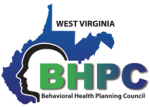Mental Health Planning and Advisory Councils (PACs) exist in every State and U.S. Territory as a condition to receive Federal Community Mental Health Services Block Grants. Federal laws specify the duties and components of membership of PACs.
States and Territories submit applications and plans to receive the Community Mental Health Services Block Grant (CMHSBG). The CMHSBG is a formula grant awarded to States and Territories based upon an allotment calculated each fiscal year by a legislated formula. The Mental Health Block Grant program is administered by the Center for Mental Health Services (CMHS), a component of the Substance Abuse and Mental Health Services Administration (SAMHSA). The primary objective of the CMHSBG is to support the creation and expansion of comprehensive, community-based systems of care for adults with serious mental illness and children with serious emotional disturbance. CMHSBG awards are made in response to submitted applications and implementation reports.
SAMHSA also administers the Substance Abuse Prevention and Treatment Block Grant (SAPTBG), through its Center for Substance Abuse Prevention (CSAP) and Center for Substance Abuse Treatment (CSAT). Most recently, SAMHSA has enabled States and Territories to submit joint applications for the CMHSBG and SAPTBG. West Virginia application may be found at https://dhhr.wv.gov/bhhf/resources/Pages/FY-2020-Block-Grant-Application.aspx.
Applications for the CMHSBG and SAPTBG are developed with input from the planning and advisory councils and must address the need for services for special populations, such as individuals who are homeless, individuals living in rural areas, IV drug users, and women with dependent children. The Block Grant programs have served to develop community-based systems of prevention, mental health promotion, treatment, and recovery.
Federal law specifies the composition of a Mental Health Planning and Advisory Council. The PAC must include:
- Representatives of certain State agencies: Mental Health, Education, Vocational Rehabilitation, Criminal Justice, Housing, Social Services, and Medicaid;
- Public and private entities concerned with the need, planning, operation, funding, and use of mental health services and related support services;
- Adults with serious mental illness who are receiving – or have received – mental health services; and
- Families of such adults and families of children with serious emotional disturbance.
The ratio of parents of children with serious emotional disturbance to other members of the PAC must be sufficient to provide adequate representation of such children.
At least 51% of the members must be persons who are not providers of service or employees of State agencies.
The West Virginia Behavioral Health Planning Council has added seats for representation of individuals in recovery from substance abuse, and providers of substance abuse services. The Council also seeks to include at least one youth representative.
Federal law specifies the duties of the PACs. They include:
- To review the Mental Health Block Grant Plan and to make recommendations;
- To serve as an advocate for adults with serious mental illness, children with a serious emotional disturbance, and other individuals with mental illnesses; and
- To monitor, review, and evaluate, not less than once each year, the allocation and adequacy of mental health services within the State.
 West Virginia Behavioral Health Planning Council
West Virginia Behavioral Health Planning Council